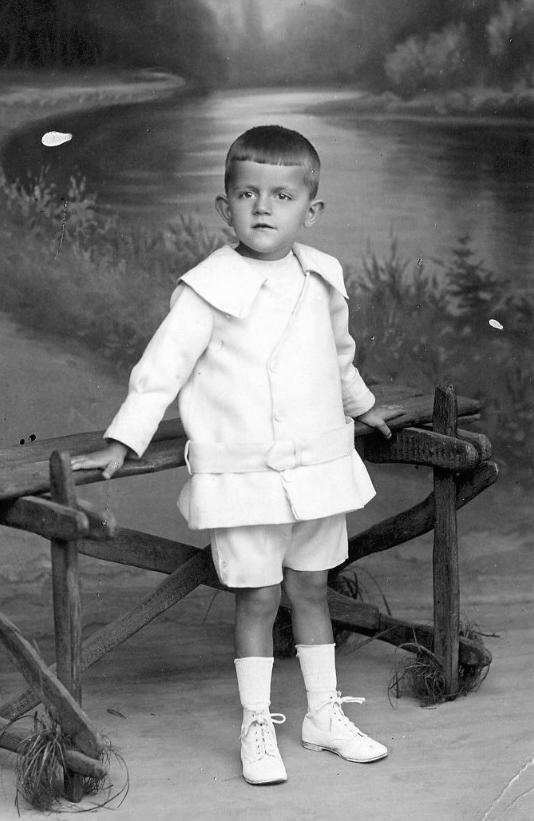
Figure 1.--This German boy wears a white tunic suit with a large Eton-style collar , probably about 1910. White tunic suits were not as popular as in America. We also do not see as many fancy suits. This boy looks about 3-4 years old. |

|
The tunic became a very popular garment at the turn-of-the 20th century. We see many Germany boys wearing them, although the photographic record suggests that tunics were much more popular in some other countries, especially America. We note the children in the royal family wearing them. We see quite a number of boys in the photograohic record wearing them. They seem to have been worn primarily by boys from affluent amilies. We don't see working-class boys wearing them.
Many of the boys we see wearing them wore them with knee pants. We have noted World War I images, but we do not think that tunics were commonly worn by German boys after the War. This was one of the many fashion cahnges that followed World War I. We do see them appearing again, briefly in the 1950s. We re not sure how prevalent they were in the 50s. Wecsee them more in fashion magazines and catalogs than the photographic record.
We begin to notice German boys wearing tunics again at the the turn of the 20th century. We note many images of the German orinces wearing tunic suits, both in the 1900s and 1910s. There are a variety of garments. The boys in the royal family (the Kaiser's granchildren) wore matching tunics. Thse seem to have been play suits and not formal garments. Many otgher German boys had more formal-looking tunics. The tunic jackets are often quite short, alnost like shirts. Some of the images are difficult to assess. We do not believe, however, that girls commonly wore tunics. Most of the boys wearing tunics seem to have come fom affluent families. We do not note working-class boys wearing them. They were mostly worn by pre-school boys, but we see a few fost day portraits of boys wearing tunic suits.
We continue to see nany German boys wearing tunic suits in the 1910s. The boys seem a little younger than in the 1900s, but we see quite a number of boys wearing tunics of various descriptions. More boys also seem to be wearing their tunic suits with straight-leg knee pants than in the 1900s when many boys wore bloomer knickers. The boy seen here wearing a tunic with a large Eton-style collar, was proably photographed around 1910 (figure 1). We think tunic suits were most popularbefore the War. We have noted, however, a variety of images taken during World War I showing boys wearing tunics. The styles and conventions seem very sililar to the 1900s. We think that they were much more popular during the early 1910s than the later war years. We are not sure about the age conventions, but the photographic record suggests they were primarily pre-school boys.
We do not think that tunics were commonly worn by German boys after World War I. We are not sure about the cause ad affect, but we think that the circumstances oif the War and aftermnath made for plainer styles--although the sailor suit continued to be cery popular.
They may have been scattered exceptions, but we do not see tunics in the photographic record. This was one of the many fashion cahnges that followed World War I.
We do see tunics appearing again, briefly in the 1950s. Or at least garments that look rather like tunics. We are not sure how prevalent they were in the 50s. Wecsee them more in fashion magazines and catalogs than the photographic record. We also see them in pattern catalogs. They would have been popular with home sewers as they were fairly simple to sew. Unlike the tunics worn in the early 20th cdntury, we see these tunics very rarely. They were worn with matching pants. We think many were worn with romper pants, byt we are not entirely sure about this. Some of these tunics were done in coordinaed brther-sister outfits. These tunics unlike the earlier tunics were not belted. We see them done in bright colors and a variety f deailing including pom balls.
Navigate the Historic Boys' Clothing Web Site:
[Return to the Main German tunic chronology page]
[Introduction]
[Activities]
[Biographies]
[Chronology]
[Clothing styles]
[Countries]
[Girls]
[Bibliographies]
[Contributions]
[FAQs]
[Glossaries]
[Images]
[Links]
[Registration]
[Tools]
[Boys' Clothing Home]